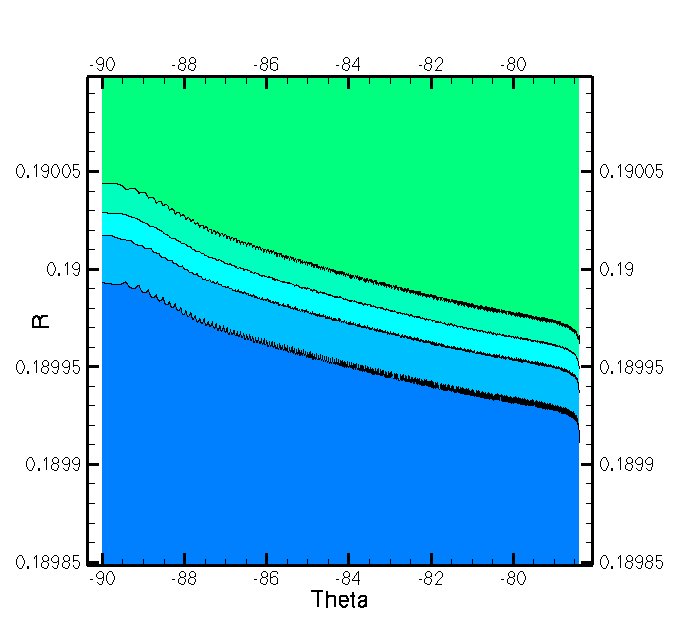Start of topic | Skip to actions
Phase 1 of the Caltech ASC converging shock experiments.
The lensing of the shock by a contact is not a trivial problem. At the point where the lens and wedge meet there are three requirements outlined by P. Dimotakis and R. Samtaney- The transmitted shock must be perpendicular to the wedge face
- The reflected wave must be cancled to minimize wave reflections from the the wedge walls
- the angle by wich the flow turns across the transmitted shock should be such that the flow is radial immediately behind the transmitted shock
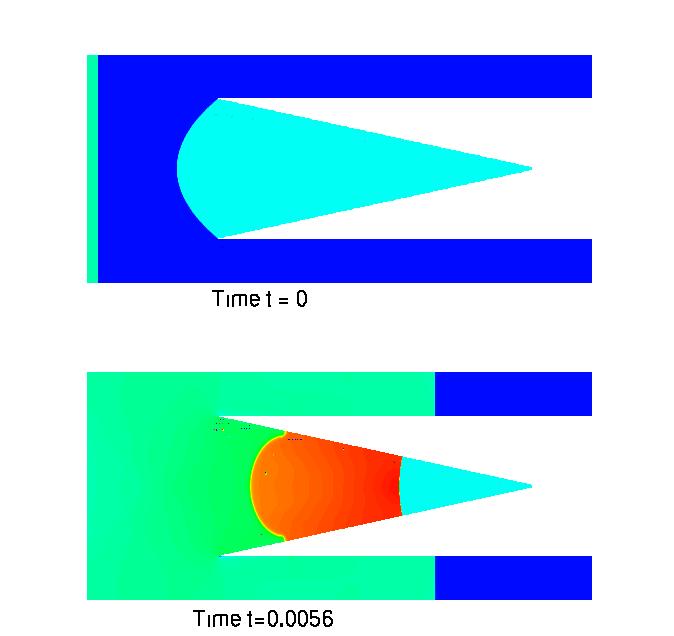 To illustrate the smoothness of the shock produced by the lensing procedure, the shockspeed
along the centerline is calculated and comparied with an equivelent Phase 0 (no lens) case.
To illustrate the smoothness of the shock produced by the lensing procedure, the shockspeed
along the centerline is calculated and comparied with an equivelent Phase 0 (no lens) case. 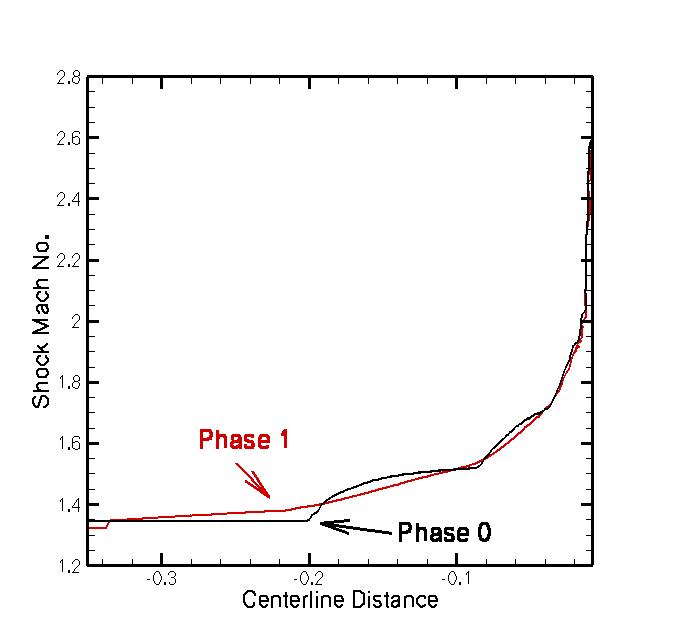
Notice that the Phase 0 has sharp changes in shock speed as the mach-stem reaches the centerline, these are absent in the Phase 1 simulations. Also, here is an animation of the pressure along the center-line (y=0) of the wedge produced to aid the experimental design : CenterlinePressure.avi. Here is an example of the circular shock being produced by the gas lens in the case where the contact between the lens and driver gas has a "membrane" consisting of a thin layer of a very heavy gas.
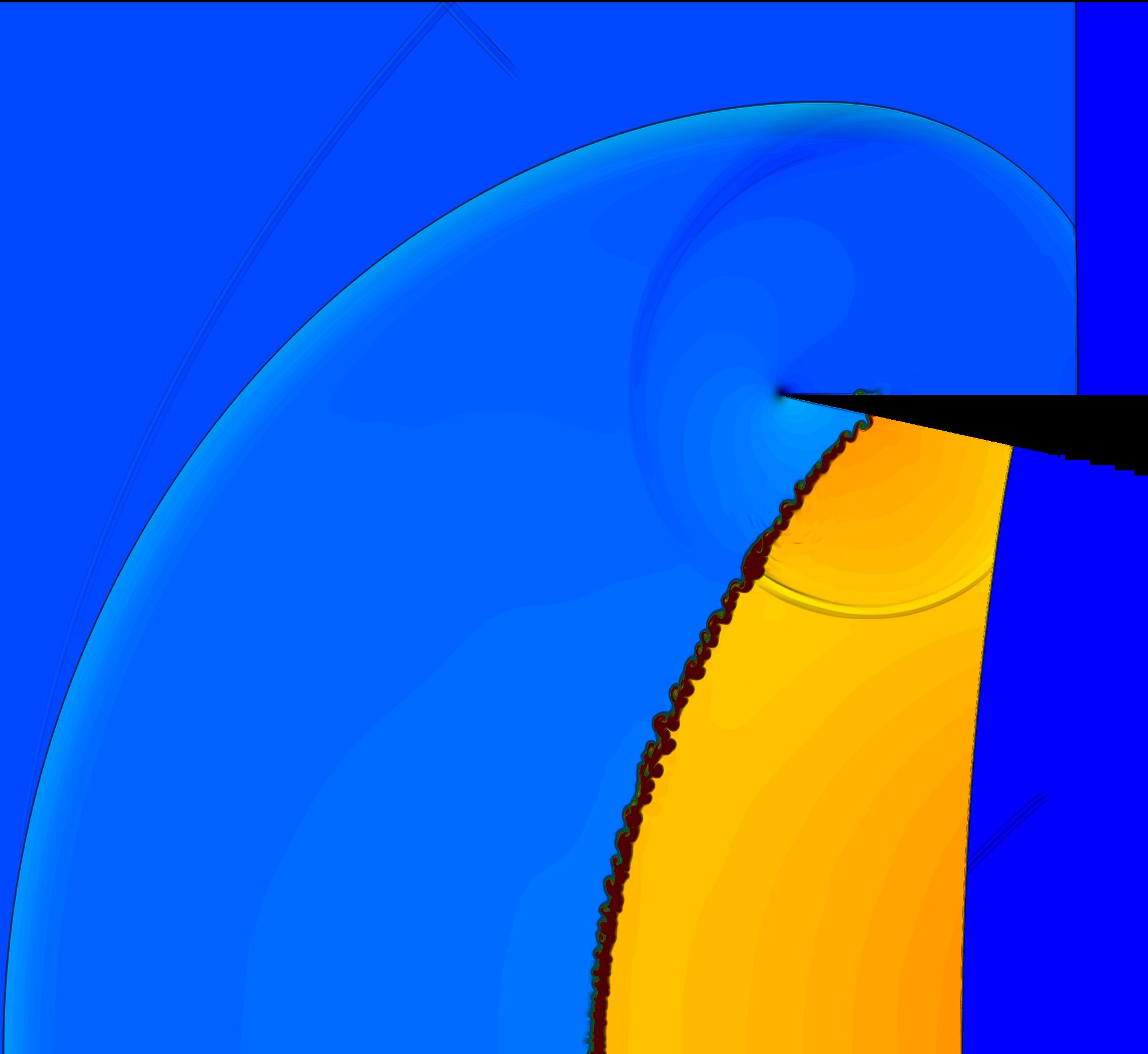
- At a later time:
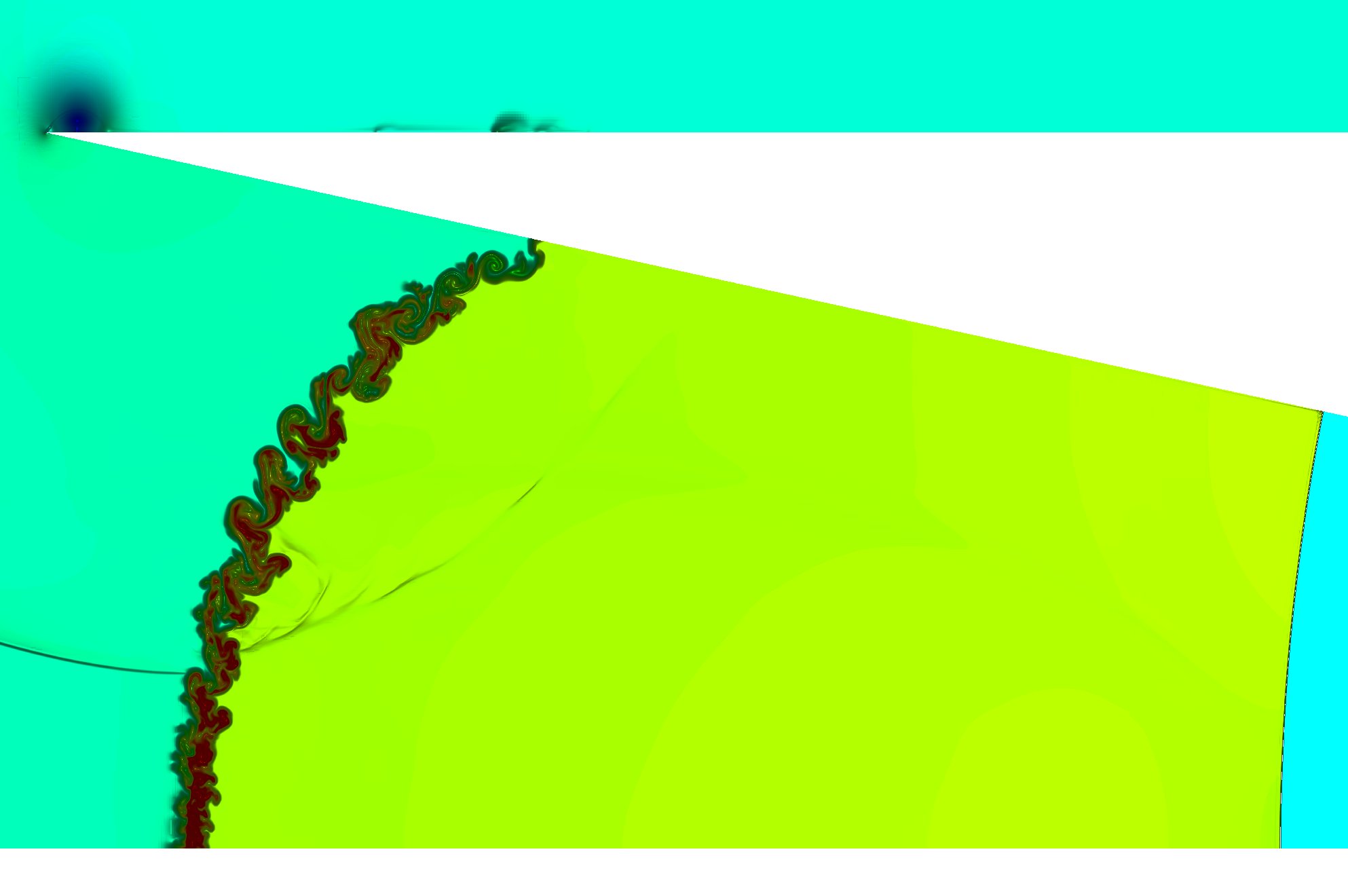
- In polar coordinates:
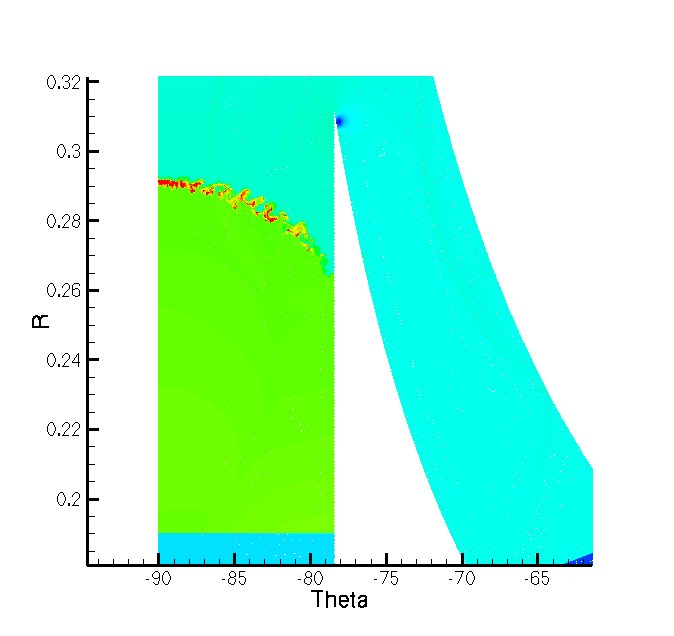
- shock closeup in polar:
